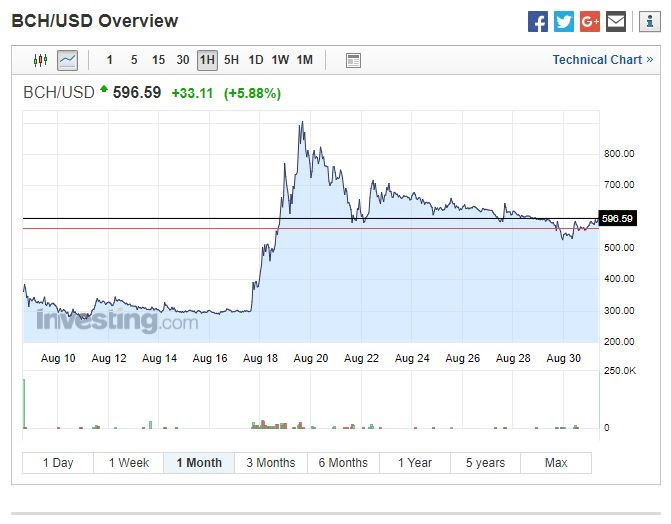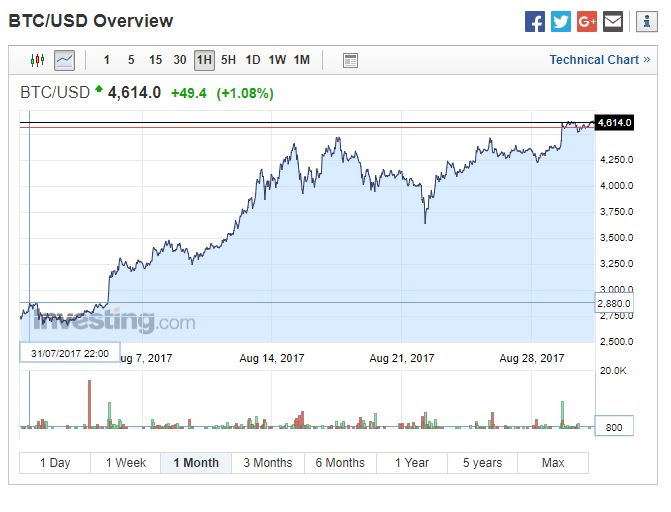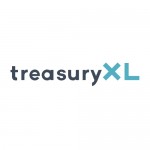Effectiever cash management; maar hoe?
| 8-9-2017 | Jan de Kroon |

Alle functiespecialisatie en goede bedoelingen ten spijt lukt het in veel organisaties, profit en nog-profit, niet of slechts met moeite het verloop van de liquiditeit op korte (en lange) termijn te voorspellen. Dat leidt niet alleen tot sub-optimalisatie maar ook tot frustratie bij alle betrokkenen in de keten. Telkens poppen er vragen op als ‘hoe komt dat?’ en ‘hoe kan dat anders?’. De antwoorden op deze vraag zijn minder ingewikkeld dan je zou denken. Onderstaand enkele praktische handreikingen.
Ownership
Bij een nadere analyse blijkt dat in veel organisaties onvoldoende helder is wie de eigenaar is van een mogelijk cash vraagstuk. Functiespecialisatie leidt ertoe dat financiële staf hierin schijnbaar een verantwoordelijkheid draagt en zich ook als zodanig gedraagt. Dat loopt echter spaak als die verantwoordelijkheden niet ook gepaard gaan met bijpassende bevoegdheden. In de praktijk schort het daaraan. Er ontstaat dan een ‘handel in probleemeigendom’.
Tip: scherp taken, verantwoordelijkheden en bevoegdheden aan en spreek mensen er ook op aan.
Cash awareness
Voor financials is financieel-economische bewustzijn hetzelfde als ademen. Het is er ongemerkt. Voor collega’s buiten de financiële functie is geld niet meer dan een rekeneenheid of een productiemiddel. Men realiseert zich niet echt dat die middelen niet alleen schaars zijn maar ook een prijs hebben. Vaak loont het de moeite om met een paar praktische en herkenbare voorbeelden uit het privéleven (denk aan hypotheeknormen en –rente, de bijdrage voor studerende kinderen of onderhoud aan het huis) de link naar zakelijke belangen te leggen. Zo was ik bij mij thuis heel lang een holding met een grote en drie kleinere maar snelgroeiende werkmaatschappijen. Zelf vooral verantwoordelijk voor concernfinanciering en risicomanagement, maar met vier lastig te plannen entiteiten. Uiteindelijk heb ik de drie kleinste entiteiten maar verzelfstandigd. Van de grootste kon ik geen afstand doen. Ervaring leert dat een verbeterd financieel economisch bewustzijn leidt tot een soepeler cash management.
Tip; investeer tijd in het stimuleren van cash awareness
Feedback en feedforward
De communicatie tussen financiële staf en lijnactiviteiten met invloed op de kasstroom is in veel gevallen sub-optimaal. Er is vaak veel ‘wij’ en ‘zij’ en er lijken tegengestelde belangen te bestaan die er niet zijn. Communicatie beperkt zich vaak tot het functioneel noodzakelijke en de twee werelden begrijpen elkaar niet echt. Omdat we vooral inhoudelijk en via mail communiceren, blijft er een zekere afstand en blijft onbegrip in stand. Realiseer je dat van iedere 100% van een boodschap ongeveer 7% betrekking heeft op de inhoud, 38 % betrekking heeft op toonzetting, klemtoon en stijl. De overige 55% van de boodschap komt over door middel van lichaamstaal. Elkaar ontmoeten of tenminste zien draagt dan ook sterk bij aan het succes van de boodschap. Alleen mailen komt niet veel verder dan die 7 % en bellen komt niet veel verder dan die 45%. Belangrijk is ook te investeren in een dialoog en elkaar scherp te houden. Feedback & feedforward zijn daartoe uitstekende en praktische instrumenten. Vanuit het DNA van de financial zijn we gewend dat een ander zich aan afspraken houdt. Doet hij/zij dat niet dan spreken we hem eropaan. Doet ie het wel of zelfs goed, dan is dat vanzelfsprekend; no further action. Bedenk echter de waarde van een compliment en geef ook eens positieve feedback als men een adequate liquiditeitenplanning levert. Verplaats je bij negatieve feedback eerst in de beleving van de ander en streef naar een co-productie zonder je voor en karretje te laten spannen. Bij het DNA van bijvoorbeeld commerciële en creatieve collega’s hoort dat je niet alleen afspraken moet maken, maar ze er ook aan moet houden. Daarbij helpt feedforward; net voor dat de andere iets moet opleveren subtiel op de radar verschijnen met de vraag of het lukt om op tijd te leveren en of je wellicht nog kunt helpen. De praktijk wijst uit dat dit beter werkt dan, vaak telkens weer, negatieve feedback achteraf.
Tip; investeer serieus in fysieke contacten met andere spelers in de keten en verplaats je met regelmaat in hun situatie
Motivatie
In veel gevallen zijn collega’s die een liquiditeitsprognose moeten aanleveren vooral extrinsiek gemotiveerd. Ze doen het omdat er een procedure is die het voorschrijft. Het goede nieuws is dat je het misschien op tijd krijgt, het slechte nieuws is dat je er weinig mee kunt. Betrokkene heeft immers zijn hart en dus zijn prio’s ergens anders liggen; het helpen van klanten bijvoorbeeld. Belangrijk is betrokkenen vooral ook intrinsiek te motiveren zodat ze herkennen dat goed cash management en het bedienen van klanten wel degelijk hand in hand gaan. Dan is er een win-win en is de prognose niet alleen op tijd maar ook inhoudelijk beter van kwaliteit.
Tip; investeer in de inhoudelijke betrokkenheid en functioneer als co-maker
Vermijd detail
Als financial hebben we de neiging dingen zeker te willen weten en daarmee samenhangend hebben we een grote voorliefde voor detail. Dat begint al bij de budgettering en strekt zich gedurende de planning & control cyclus uit naar zowel verantwoordings- als cashmomenten.
Bedenk dat het DNA van de meeste lijnentiteiten een zeer sterke voorkeur voor hoofdlijnen heeft. Een liquiditeitsprognose met veel detail is om die reden al op voorhand gedoemd te mislukken. Zeker omdat er veelal negatieve feedback volgt als het op detail niet uitkomt. Het voelt bij betrokkenen bovendien als een impliciete controle op een te verwachten realisatie.
Het DNA brengt echter mee dat er vaak sprake is van enig opportunisme in het realiseren van die toekomst. De werkelijkheid is altijd een andere en veelal een wat slechtere.
Tip: vermijd detail en beperk een prognose tot herkenbare hoofdlijnen
Vier successen
Het DNA van collega’s buiten de financiële functie is veelal extravert en wil hetzij winnen het zij klanten een plezier doen of leuke dingen bedenken. Door efficiënt en effectief cash management wordt op kosten en rente bespaard en zo levert de financiële functie zelf een bijdrage aan het resultaat; zij het niet het operationele resultaat in hoofdzaak. Het is de moeite waard de opbrengsten van beter cash management niet alleen zichtbaar te maken, maar ze ook te delen. Stel de vraag hoeveel meer omzet een commerçant kan ophalen als hij een gunstiger betaaltermijn kan voorstellen, respectievelijk wat het doet met de kostprijs als de rentecomponent kleiner is in een prijsgevoelige markt.
Tip: organiseer samen feestjes en vier successen.

Owner & Managing partner of Improfin Groep
Meer artikelen van deze auteur:
Kunnen banken zich opnieuw uitvinden of is het inderdaad Kodak revisited?



 When they hear e-invoicing, companies often think that this is sending invoices by e-mail. However, e-invoicing is more than that. Not only sending the invoice is part of this, but also the electronic booking, payment and collection of the money belongs to this process. Electronic invoicing leads to a major save of costs. For the sender, but especially for the receiver. Since e-invoicing is digitalizing invoicing for the sender as well as the receiver, a PDF-invoice is not seen as electronic invoicing.
When they hear e-invoicing, companies often think that this is sending invoices by e-mail. However, e-invoicing is more than that. Not only sending the invoice is part of this, but also the electronic booking, payment and collection of the money belongs to this process. Electronic invoicing leads to a major save of costs. For the sender, but especially for the receiver. Since e-invoicing is digitalizing invoicing for the sender as well as the receiver, a PDF-invoice is not seen as electronic invoicing.


 Wat is er gebeurd met de Bitcoin per 1 augustus? De Bitcoin is gesplitst! Ik zal het hieronder proberen uit te leggen. Ik voorspel u vast, het is niet eenvoudig. Na de vele discussies over de schaal van de digitale valuta Bitcoin, is er besloten om een geheel nieuwe valuta te maken, de Bitcoin Cash. Het is wel een beetje ingewikkeld allemaal. Het is een resultaat van politieke, technologische en ideologische discussies over het laten groeien van de Bitcoin. Sommige deskundigen zeggen dat een hele nieuwe valuta, genaamd Bitcoin Cash, kan helpen om Bitcoin op grotere schaal toegankelijk te maken voor een grotere groep mensen.
Wat is er gebeurd met de Bitcoin per 1 augustus? De Bitcoin is gesplitst! Ik zal het hieronder proberen uit te leggen. Ik voorspel u vast, het is niet eenvoudig. Na de vele discussies over de schaal van de digitale valuta Bitcoin, is er besloten om een geheel nieuwe valuta te maken, de Bitcoin Cash. Het is wel een beetje ingewikkeld allemaal. Het is een resultaat van politieke, technologische en ideologische discussies over het laten groeien van de Bitcoin. Sommige deskundigen zeggen dat een hele nieuwe valuta, genaamd Bitcoin Cash, kan helpen om Bitcoin op grotere schaal toegankelijk te maken voor een grotere groep mensen.


 Already over a year treasuryXL facilitates information exchange about corporate treasury. Contributions are, amongst others, about the development of the treasurer as a person. Due to the improved economy we notice a rising interest in this topic. Education, competence development and labour market are the most obvious examples. This is why we start the Treasurer Development initiative.
Already over a year treasuryXL facilitates information exchange about corporate treasury. Contributions are, amongst others, about the development of the treasurer as a person. Due to the improved economy we notice a rising interest in this topic. Education, competence development and labour market are the most obvious examples. This is why we start the Treasurer Development initiative. treasuryXL
treasuryXL

 The Paypers published an interesting
The Paypers published an interesting  The treasury community knows us from ‘fresh’ content on a daily basis. A growing number of treasury professionals, our experts, send in articles and blogs and it is our goal to present interesting content that matters to our readers.
The treasury community knows us from ‘fresh’ content on a daily basis. A growing number of treasury professionals, our experts, send in articles and blogs and it is our goal to present interesting content that matters to our readers. Annette Gillhart – Community Manager treasuryXL
Annette Gillhart – Community Manager treasuryXL Facturis
Facturis

